San Antonio College is a public community college located in San Antonio, Texas, USA. The following is a detailed introduction to the school:
1. School History
San Antonio College has a long history. Founded in 1925, it is the oldest member of the Alamo Community College District. It has witnessed the educational development of San Antonio and the surrounding areas, and has provided local residents with the opportunity to receive higher education for many years.
2. School size
Number of students: It has a large student population and serves more than 20,000 students each year. These students come from different backgrounds, including students who have just graduated from high school, working people seeking continuing education or career changes, etc.
Number of teachers: The school has many professional teachers. Although the specific number may vary depending on the year and course settings, it can guarantee high-quality teaching guidance for students, with a reasonable teacher-student ratio to ensure that teachers can pay attention to the learning situation of each student.
Campus area and facility distribution: The campus is large and has modern teaching facilities. It includes multiple teaching buildings, a well-stocked library, advanced science laboratories, computer laboratories, art studios, and sports facilities (such as gyms, stadiums, etc.), providing ample space for students' study, research, and leisure activities.
3. Educational Resources
Professional Settings:
A wide range of academic fields: It provides a rich and diverse range of professional options, covering many fields such as liberal arts, science, business, engineering, health sciences, and social sciences.
Examples of popular majors: In business, there are majors such as accounting and business administration to help students lay a solid foundation of business knowledge; the field of health sciences includes nursing majors, which have cultivated many excellent nursing talents. The professional courses focus on the combination of theory and practice, so that students can smoothly enter the medical industry after graduation; engineering majors such as computer science provide students with computer programming, system analysis and other course content to adapt to the rapid development of the technology industry.
Degree and certificate system: Associate degrees can be awarded, including Associate of Arts and Associate of Science. Various vocational certificates are also provided to meet the learning goals of different students, whether for transfer to further studies or direct entry into the workplace.
Teaching resources:
Library resources: The library has a large number of books, journals, and electronic resources covering various disciplines, providing rich material support for students' academic research.
Online learning platform: The school actively uses modern educational technology, has a complete online learning platform, and provides online learning options for some courses, so that students can arrange their studies according to their own time and learning progress.
IV. Teaching characteristics
Advantages of small class teaching: Many courses adopt a small class teaching model with a moderate average class size, so that teachers can better pay attention to the learning progress of each student and provide personalized learning guidance. For example, in some professional courses, teachers can provide detailed answers to students' specific questions to promote students' in-depth understanding of knowledge.
Practical teaching link: Attach great importance to practical teaching and have established cooperative relationships with many local enterprises, medical institutions, social organizations, etc. Taking nursing as an example, the school will arrange for students to go to cooperative hospitals for clinical internships, so that students can apply the knowledge and skills they have learned in a real medical environment and improve their practical operation ability. In business majors, there will also be corporate internship programs to enable students to understand the actual process of business operations.
Transfer support system: For students who want to continue to pursue a bachelor's degree, the school has a complete transfer support system. The school has signed transfer agreements with many four-year universities, including some well-known universities in Texas. The school's academic advisors will provide students with transfer guidance, help them choose appropriate courses, and ensure that the credits they have taken can be smoothly transferred to the target university.
V. Campus Life
Student Organizations and Clubs: There are a variety of colorful student organizations and clubs covering academic, cultural, artistic, sports and other fields. For example, there are academic research clubs where students can discuss professional knowledge and carry out academic projects together; cultural clubs include international cultural exchange clubs, which allow students to understand the cultural customs of different countries; art clubs such as music clubs and painting clubs provide a platform for students with artistic interests to display and communicate; sports clubs include basketball clubs and football clubs, which organize various sports activities and competitions.
Campus cultural activities: Various campus cultural activities are often held, such as concerts, drama performances, art exhibitions, cultural festivals, etc. These activities not only enrich students' extracurricular life, but also create a strong campus cultural atmosphere. For example, the annual campus cultural festival will showcase the talents and special food of students from different cultural backgrounds, and promote the exchange and integration of campus multiculturalism.
Sports and competitive activities: The school's sports teams actively participate in various sports and competitive competitions. The school is a member of the National Junior College Athletic Association (NJCAA) of the United States, and its sports include basketball, football, volleyball, track and field, etc. These sports activities not only cultivate students' teamwork spirit and competitive consciousness, but also win honors for the school.
VI. School ranking
It performs well in the community college rankings and is one of the well-known community colleges in Texas and even the United States. Its high-quality teaching, rich educational resources and comprehensive support for students have earned it recognition in multiple rankings.
VII. Admission Requirements
Educational Requirements: Applicants are generally required to have a high school diploma or equivalent. For some special vocational skills certificate courses, applicants with relevant work experience but lower academic qualifications may be considered on a case-by-case basis.
Language Requirements: For international students, TOEFL or IELTS scores are usually required to prove English language proficiency. The specific score requirements may vary depending on the major and course, but generally TOEFL scores are required to be above 61 points and IELTS scores are required to be above 6.0 points.
VIII. Tuition and Aid
Tuition Standards: Tuition is relatively reasonable, and the tuition standards for in-state students and out-of-state students are different. Taking the 2023-2024 academic year as an example, the tuition per credit for in-state students is approximately US$104, and the tuition per credit for out-of-state students is approximately US$312.
Funding Policy: The school provides a variety of financial aid methods to help students reduce their financial burden. Including federal grants (such as Pell Grants), state government grants, school scholarships, student loans, etc. The school's financial aid office will provide students with detailed funding information consultation and application guidance to help students find the funding plan that best suits them. According to statistics, a large number of students are able to obtain financial support through various funding methods and successfully complete their studies.
-

Harvard University
-
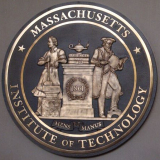
Massachusetts Institute of Technology
-
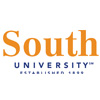
South University
-

University of West Georgia
-
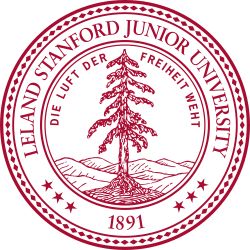
Stanford University
-
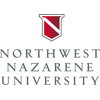
Northwest Nazarene University
-
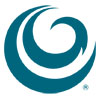
Hawaii Pacific University
-

Shorter University
-

Nova Southeastern University
-
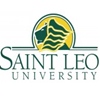
Saint Leo University
-

Mesoamerican University
-

Istmo University
-

Mariano Galvez University of Guatemala
-

Regional University of Guatemala
-

Galileo University
-

Francisco Marroquín University
-

Rafael Landívar University
-

University of the Valley of Guatemala
-

University of San Carlos of Guatemala
-

Technological Institute of Tlaxcala Plateau
-

Golfo University
-

Technological University of South Sonora
-

Technological University of Huejotzingo
-

Tizimín Institute of Technology
-

Chilpancingo Institute of Technology

